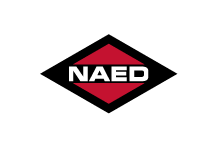Whether opting for on-premise, cloud, or a hybrid, when it comes to software and applications, there are many factors to consider in finding the best fit. Here’s a quick look at what’s what:
On-Premise
An on-premise (on-prem) solution refers to a situation in which a company hosts its computing resources in their private data centers. On-prem solutions are secure, reliable, and allow organizations to maintain control at a level that the cloud often can’t provide.
Financial and government agencies or organizations that need more control over their computing environment tend to choose on-prem because it provides a higher level of security.
In a nutshell, if you have extra-sensitive data and information, the on-premise solution makes more sense. However, the company is responsible for the costs of power consumption, space, and hardware, unlike with cloud…
Cloud
Cloud computing refers to a solution where storage and servers are both owned and operated by a third-party provider. Basically, all supporting infrastructure is owned, managed, maintained, and secured by the cloud provider.
Cloud computing has become an increasingly appealing choice because of the agility and scalability it offers businesses. Moving to the cloud can save time, money, as with this model you only pay for the resources you use. And, you don’t pay for upkeep and maintenance costs. Since resources are stored in data centers of the third-party service provider, the approach also enhances a company's disaster recovery strategy.
Typically, when people speak about moving to the cloud, they’re referring to public cloud computing solutions. In public cloud computing solutions, infrastructure is shared by “cloud tenants” – aka other organizations using services from the same third-party cloud provider. Enterprises manage their accounts and access services by using a web browser.
That brings us to security – which is usually the main barrier to deployment. Because of many publicized cloud breaches, IT departments worry about security threats like losing employees’ and customers’ personal information.
Hybrid
Selecting a hybrid environment means combining on-prem infrastructure and public cloud computing. A hybrid solution offers more deployment options and flexibility. For example, many businesses can use the on-premise infrastructure for critical operations and sensitive data, and the cloud for lower security, high-volume needs.
Some organizations see the hybrid approach as the “best of both worlds” while others view it as a way to baby step toward the cloud. Many companies migrate their customer-facing and business applications (like customer relationship management, CRM, or an enterprise resource management, ERP,) to the cloud.
In a hybrid solution, applications and data can move between public and private clouds. In this case, there is also the option of “cloud bursting” – which is when a resource or application runs in the on-premise infrastructure until demand increases. The company can then burst through to the public cloud in order to tap into more computing resources.
Focus on implementing and supporting the right software solutions and tools for your employees helps create better experiences for your customers. NAED's Building a Connected Business report presents a building systems framework and timeline to help your company prioritize, plan, and implement various digital strategies.
Contact the Member Engagement Team to learn more or get the report.

